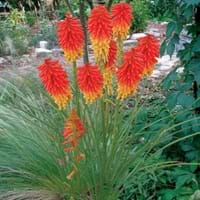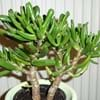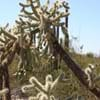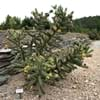Life Span
Perennial
Perennial
Type
Cactus or Succulent
Perennial
Origin
South America, Brazil
Hybrid origin
Types
not available
Not Available
Number of Varieties
Not Available
Habitat
Rocky areas, rocky outcrops, Sandy areas
Damp Places, Marshy ground
USDA Hardiness Zone
10-15
6-9
Sunset Zone
H2, 13, 21, 22, 23, 24
2a, 2b, 3a, 3b, 4, 5, 6, 7, 8, 9, 14, 15, 16, 17, 18, 19, 20, 21, 22, 23, 24
Habit
Upright/Erect
Clump-Forming
Flower Color
White
Yellow, Red, Orange, Pink
Flower Color Modifier
Not Available
Bicolor
Fruit Color
Red, Violet
Not Available
Leaf Color in Spring
Not Available
Green, Blue Green
Leaf Color in Summer
Not Available
Green, Blue Green
Leaf Color in Fall
Not Available
Blue Green, Gray Green, Light Yellow
Leaf Color in Winter
Not Available
Light Green
Leaf Shape
Succulent
Linear
Plant Season
Spring, Summer, Fall, Winter
Spring, Summer
Sunlight
Full Sun
Full Sun, Partial Sun
Type of Soil
Loam, Sand
Clay, Loam, Sand
The pH of Soil
Acidic, Neutral, Alkaline
Acidic, Neutral
Soil Drainage
Well drained
Well drained
Bloom Time
Early Summer
Early Summer, Summer
Tolerances
Drought
Drought
Where to Plant?
Container, Ground, Pot
Container, Ground
How to Plant?
Cuttings, Seedlings, Vegetative
Divison, Seedlings
Plant Maintenance
Medium
Medium
Watering Requirements
Needs less watering
Needs more water during establishment, Water Deeply, Water in morning to avoid prompting diseases, Water in the early morning hours
In Summer
Regular watering required
Lots of watering
In Spring
Moderate
Moderate
In Winter
Average Water
Average Water
Soil pH
Acidic, Neutral, Alkaline
Acidic, Neutral
Soil Type
Loam, Sand
Clay, Loam, Sand
Soil Drainage Capacity
Well drained
Well drained
Sun Exposure
Full Sun
Full Sun, Partial Sun
Pruning
Remove damaged leaves, Remove dead branches, Remove dead leaves
Cut or pinch the stems, Remove damaged leaves, Remove dead branches, Remove dead leaves
Fertilizers
All-Purpose Liquid Fertilizer, No fertilizers needed
All-Purpose Liquid Fertilizer, Apply N-P-K
Pests and Diseases
Not Available
Onion thrips, Red blotch, Root rot
Plant Tolerance
Drought
Drought, Moisture
Flower Petal Number
Single
Single
Foliage Texture
Bold
Coarse
Foliage Sheen
Not Available
Matte
Attracts
Birds, Fruit Bats, Moths, pollinators
Snails
Allergy
Toxic
Not Available
Aesthetic Uses
along a porch, deck or patio, Beautification, Borders, Landscape Designing, Showy Purposes, small hedge, Used for decorating walls, fences, gates, hedges, etc.
Borders, Cottage Garden, Ground Cover
Beauty Benefits
Not Available
Not Available
Environmental Uses
Food for birds
Air purification
Medicinal Uses
No Medicinal Use
Not Available
Part of Plant Used
Fruits, Whole plant
Not Available
Other Uses
Used as Ornamental plant, Used in construction, Used to feed livestock
Not Available
Used As Indoor Plant
Showy
No
Used As Outdoor Plant
Yes
Yes
Garden Design
Container, Feature Plant, Houseplant, Landscape, Rock Garden, Showy Tree, Wall
Container, Cutflower, Mixed Border, Rock Garden, Wall
Botanical Name
CEREUS jamacaru
KNIPHOFIA 'Border Ballet'
Common Name
mandacaru, cardeiro, Night-blooming Cactus, Pleated Cereus
Tritoma, Wisley Blue Spring Starflower, Wisley Blue Springstar
In Hindi
mandacaru
Tritoma
In German
Cereus jamacaru
Tritoma
In French
Cereus jamacaru
Tritoma
In Spanish
Cereus jamacaru
tritoma
In Greek
Mandacaru
tritoma
In Portuguese
Mandacaru
Tritoma
In Polish
Mandacaru
Tritoma
In Latin
Mandacaru
Trytoma
Phylum
Tracheophyta
Tracheophyta
Class
Magnoliopsida
Magnoliopsida
Order
Caryophyllales
Asparagales
Family
Cactaceae
Liliaceae
Clade
Angiosperms, Core eudicots, Eudicots
Angiosperms, Monocots
Tribe
Careeae
Not Available
Subfamily
Cactoideae
Not Available
Season and Care of Mandacaru and Tritoma
Season and care of Mandacaru and Tritoma is important to know. While considering everything about Mandacaru and Tritoma Care, growing season is an essential factor. Mandacaru season is Spring, Summer, Fall and Winter and Tritoma season is Spring, Summer, Fall and Winter. The type of soil for Mandacaru is Loam, Sand and for Tritoma is Clay, Loam, Sand while the PH of soil for Mandacaru is Acidic, Neutral, Alkaline and for Tritoma is Acidic, Neutral.
Mandacaru and Tritoma Physical Information
Mandacaru and Tritoma physical information is very important for comparison. Mandacaru height is 760.00 cm and width 300.00 cm whereas Tritoma height is 45.70 cm and width 50.80 cm. The color specification of Mandacaru and Tritoma are as follows:
Mandacaru flower color: White
Mandacaru leaf color: Not Available
Tritoma flower color: Yellow, Red, Orange and Pink
- Tritoma leaf color: Green and Blue Green
Care of Mandacaru and Tritoma
Care of Mandacaru and Tritoma include pruning, fertilizers, watering etc. Mandacaru pruning is done Remove damaged leaves, Remove dead branches and Remove dead leaves and Tritoma pruning is done Cut or pinch the stems, Remove damaged leaves, Remove dead branches and Remove dead leaves. In summer Mandacaru needs Regular watering required and in winter, it needs Average Water. Whereas, in summer Tritoma needs Lots of watering and in winter, it needs Average Water.





